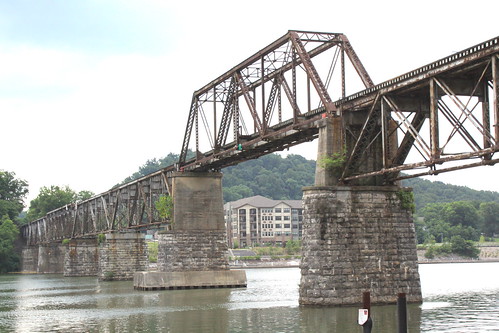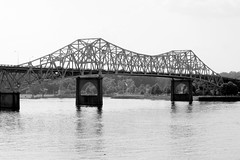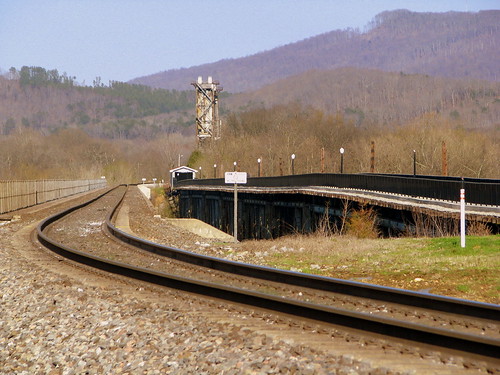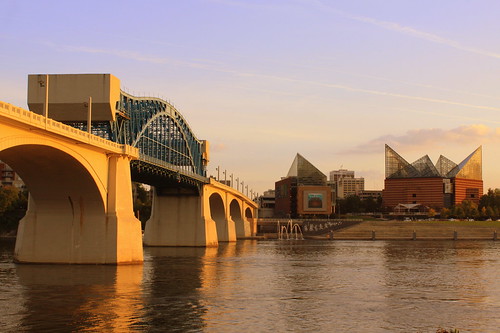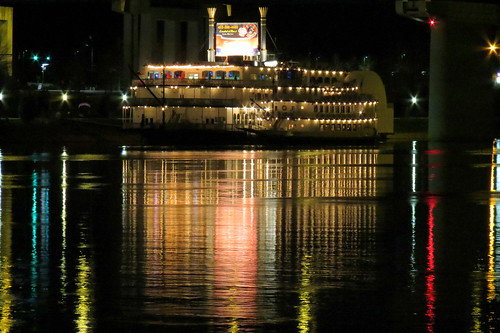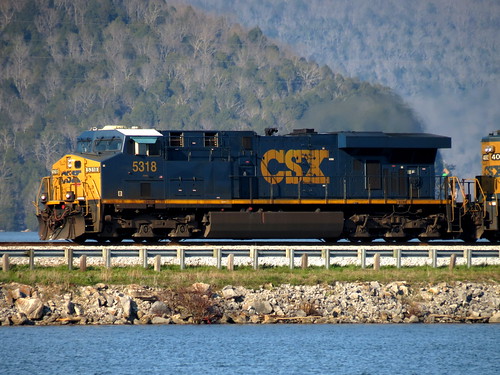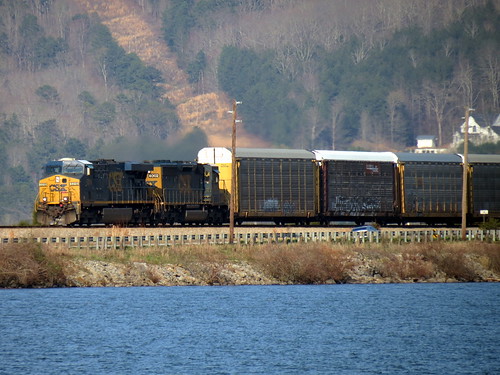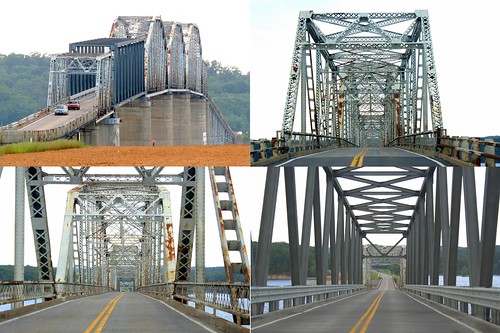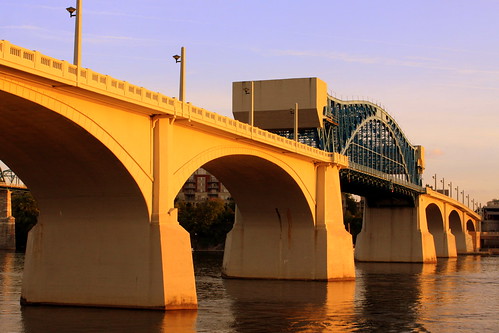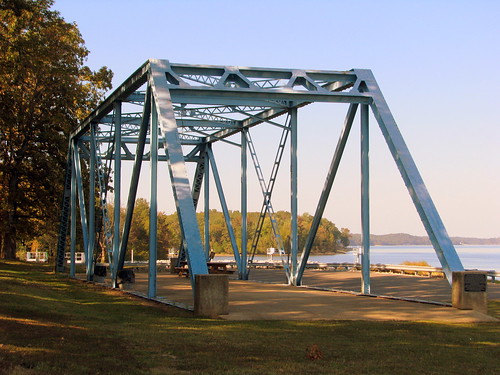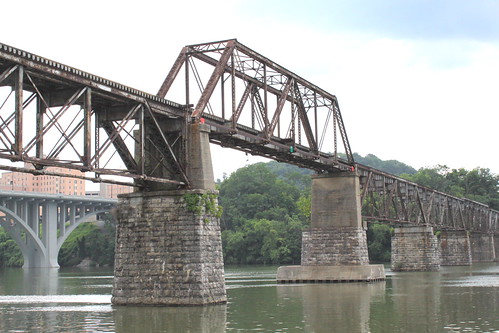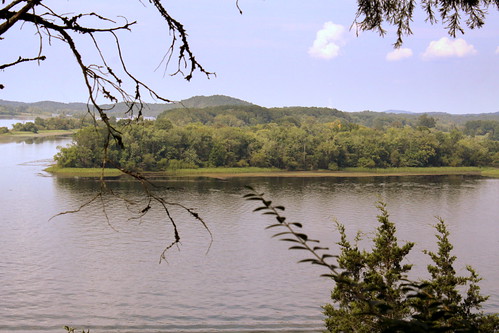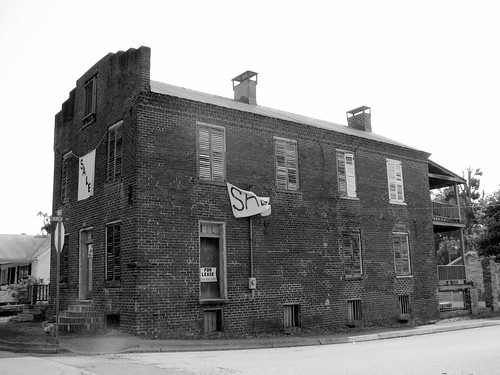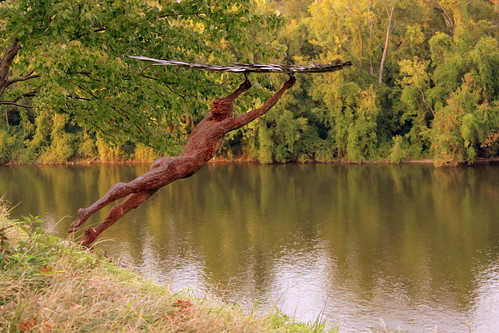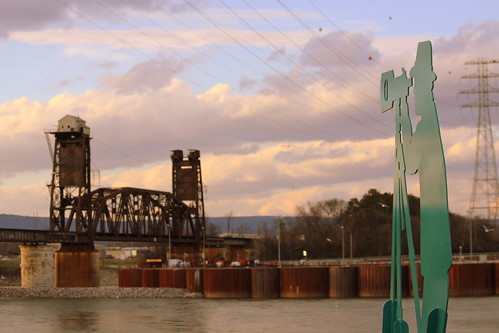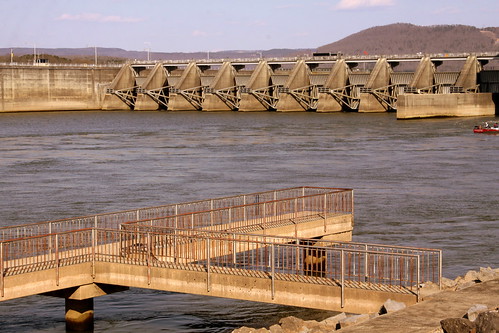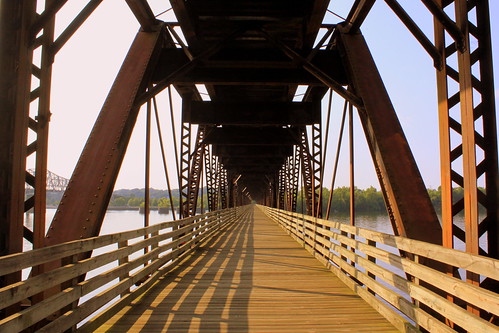
The Old Railroad Bridge dates back over 140 years as an important crossing of the Tennessee River between Florence and Sheffield in The Shoals area of Alabama.
Back in 1840, the first bridge at this location opened. It significantly damaged by tornadoes and storms all through the 1850's and eventually that bridge was destroyed during the Civil War.
In 1870, the Memphis & Charleston Railroad decide to build another bridge at this spot. Over the next 120 years, there is quite a lengthy history about who got to use the bridge and changes to the bridges configuration. I'll hit some of the highlights, but below I'll link to a thorough history.
Originally, there was not a method for tall ships to go through, so a drawbridge was installed in 1872 along the northern end. A new drawbridge was installed in 1906. In 1948, the drawbridge was replaced with a turn span was installed. (When the bridge was open to tall ship, this span pivoted or rotated counter-clockwise and had stone piers to rest upon.) In 1962, this segment was changed again to a lift bridge, raising to 350 feet of clearance over the water. In 1988, all railroads abandoned the bridge and the lift section was completely removed.
This bridge not only carried railroads on the top, but also had a lower deck for vehicular traffic. This closed in 1939 with the opening of the O'Neal Bridge.
Other railroads that used this bridge were Virginia & Georgia; Nashville, Florence & Sheffield; L&N; Southern; Around 1903, a streetcar service also used the rails to get passengers from one side to the other and it lasted until 1933.
The complete history is here:
www.oldrailroadbridge.org/index.php?option=com_content&am...
In 1990, a preservation society began in an effort to restore the bridge. The old railroad bed leading to the upper portion of the bridge now has a large gate in front of it, so you can look across it, but go no further. Down below, the access area was cleaned up and the wood that had been rotting for over 50 years was replaced. Today, this lower deck is a pedestrian bridge where you can walk about 1500 feet to where the segment is missing, and then you have to turn around.
Finally, the Library of Congress has some photos of this bridge dating back to 1976
www.loc.gov/pictures/search/?q=Photograph:%20al1320&f...
